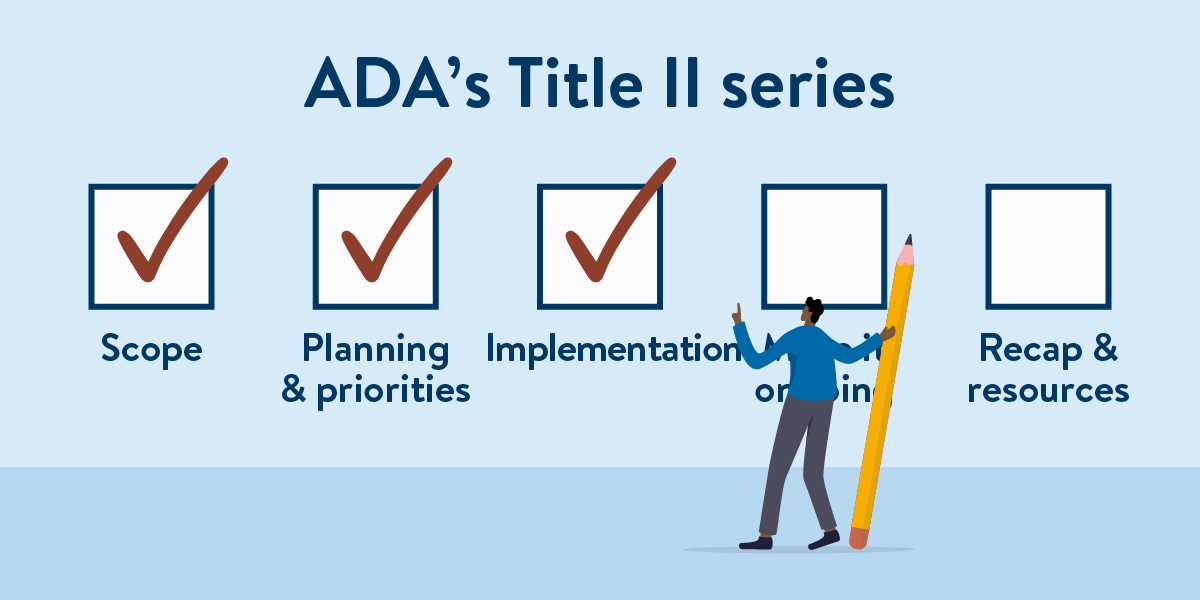Get some tips on strategies and tactics to prepare your organization.
8/20/2025 9:27:51 AM

The US Department of Justice (DOJ) added digital accessibility requirements to the Americans with Disabilities Act (ADA) for Minnesota’s state and local government entities. This new rule puts into writing practices that the DOJ has followed for decades. Our Update to ADA’s Title II series digs deeper into preparation and implementation resources for state and local governments as they work toward compliance.
In the article "Update to ADA’s Title II," we outlined what the new rule means for government staff and how to begin the accessibility journey. We are following that with a series of articles on preparing for the new rule.
In this “Preparation for Update to ADA’s Title II Series,” we have covered:
This article, the third in the series, explains how to develop an implementation plan by addressing high-priority issues, assigning roles and responsibilities, setting timelines, and incorporating retesting to confirm that the fixes work.
The first step to implementation is for your organization to recognize that digital accessibility must be a program – not a project or task. It must have funding and structure that ensures long-term, ongoing success. The return on this investment will include:
Every organization is different, so a one-size-fits-all approach won’t work. Viewing implementation as an ongoing program helps ensure your plan is tailored, adaptable, and effective. This article shares examples from Minnesota’s program—launched in 2010 and developed over many years—along with other general observations.
Your implementation plan combines the initial scoping and planning activities (mentioned in the introduction) with a strategic process to:
Here’s the State of Minnesota’s implantation plan template (Word) | (PDF) we used in 2010.
Any plan you develop will require time, funding, and executive support. An experienced project manager or product manager can help you define the details of the implementation plan. For example, the sample template above breaks down action plans into objectives, then each objective into the following components:
Having a project or program manager on your team can help determine the level of detail needed for each step and decide which actions to start now and which can be scheduled for later.
You can design an implementation plan in the way that works best for your organization. Keys to success include:
Defining accessibility as a program, then crafting a plan with measurable steps, will greatly increase your chances of making it a reality.
A list of resources related to this second part.
Would you like to learn more about the accessibility work being done by Minnesota IT Services and the State of Minnesota? Once a month we will bring you more tips, articles, and ways to learn more about digital accessibility.
Accessibility
Accessibility